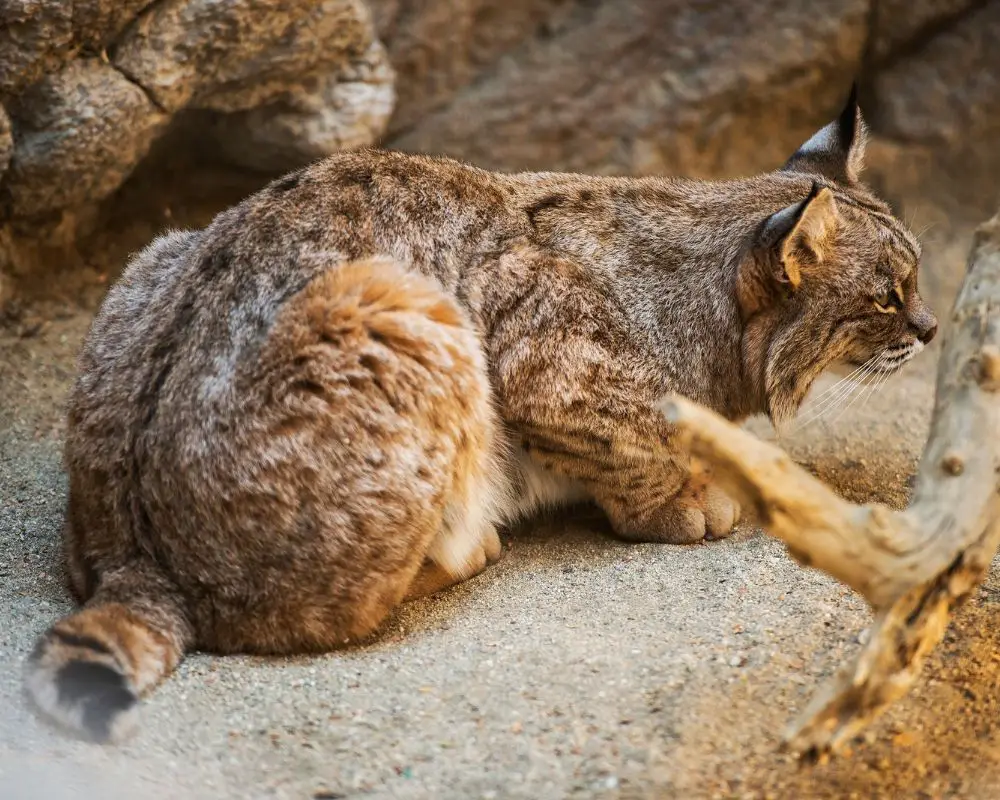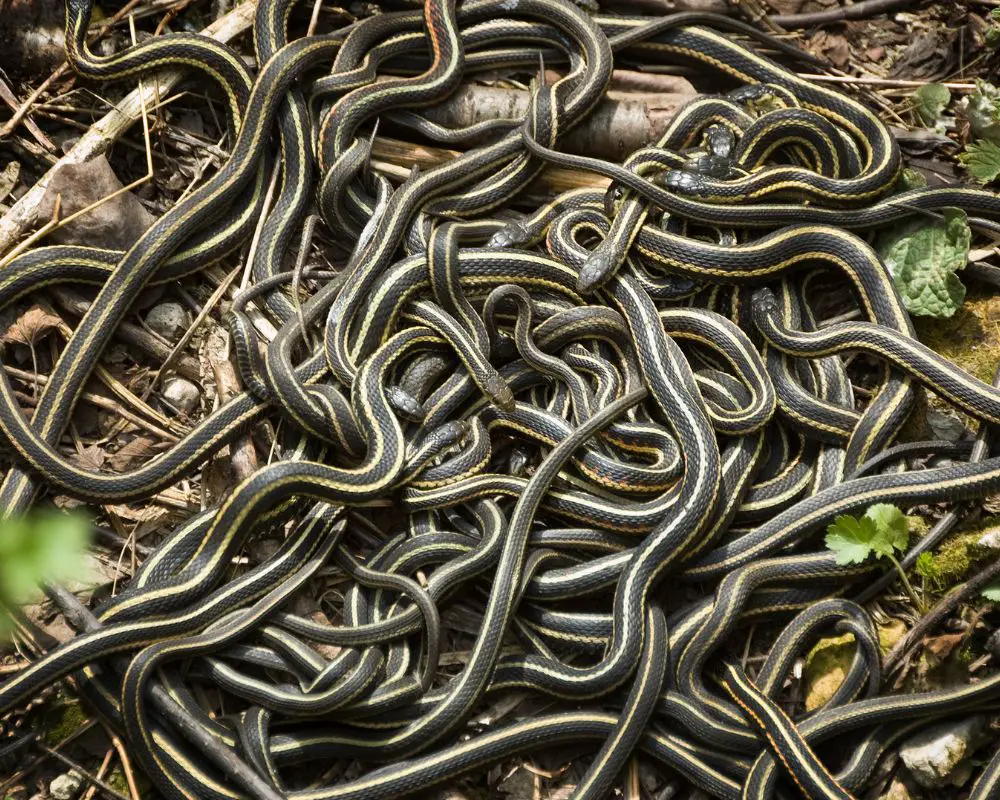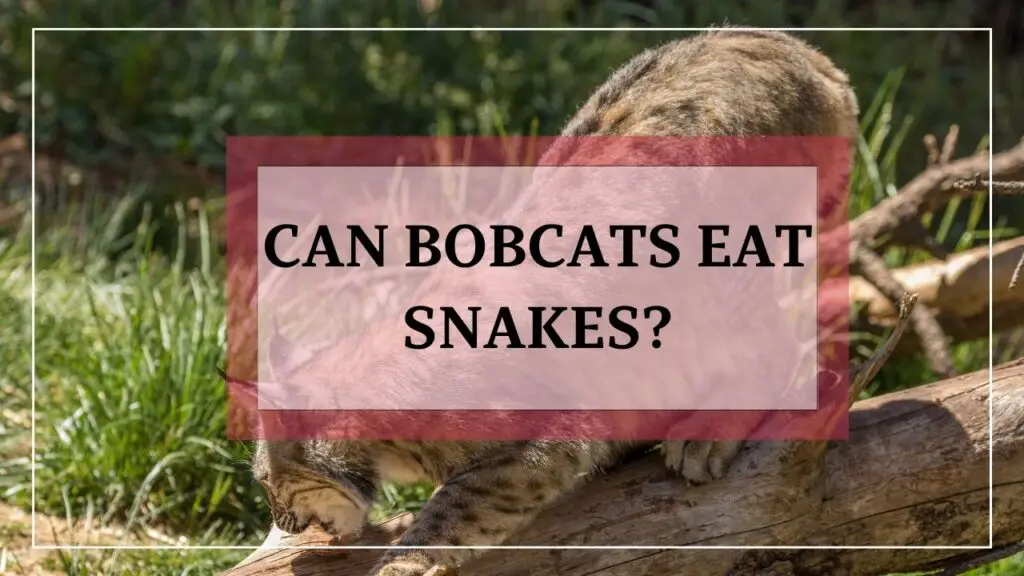Bobcats are known for their agility and hunting skills, but what exactly do they eat in the wild? This is a common question among wildlife enthusiasts and biologists alike. While bobcats are known to hunt a variety of prey, including small mammals and birds, the question remains: can bobcats eat snakes?
Bobcats are capable of eating snakes. In fact, snakes can make up a significant portion of a bobcat’s diet, especially in areas where other prey is scarce.
In this blog post, we will dive deeper into the topic of bobcats and snakes, exploring the types of snakes that bobcats can eat, how they hunt and eat them, and any potential dangers involved. Stay tuned to learn more about these fascinating felines and their varied diet!
Can Bobcats Eat Snakes?


In order to deeply understand the behavior of bobcats towards different types of snakes, we need to study 3 things:
Bobcat Diet And Hunting Behavior
Bobcats are carnivores and their diet mainly consists of small mammals, birds, and reptiles. They are opportunistic hunters, meaning they will hunt and eat whatever prey is available to them, including snakes. Bobcats have strong jaws, sharp claws, and exceptional hunting skills, making them formidable predators in the wild.
Snake As Part Of A Bobcat’s Diet
Snakes can make up a significant portion of a bobcat’s diet, especially in areas where other prey is scarce. Bobcats have been observed hunting and eating a variety of snake species, including garter snakes, rat snakes, and even venomous snakes such as copperheads.
Types Of Snakes That Bobcats Can Eat
Bobcats are able to eat a wide range of snake species, from small garter snakes to large rat snakes. However, the size and type of snake that a bobcat can eat depend on several factors, including the bobcat’s age, size, and hunting skills. Younger and smaller bobcats are often limited to smaller prey, while larger and more experienced bobcats can take on larger prey, including snakes.
How do Bobcats Hunt and Eat Snakes?
Now, let’s jump to the exact process that turns snakes into a delicious meal for Bobcats:
1. Hunting Techniques
Bobcats use sight and sound mainly for hunting.[1] Some of the hunting techniques used by bobcats to hunt snakes include:
- Stalking: Bobcats will approach their prey quietly and slowly, using their excellent senses to detect their prey’s movements.
- Pouncing: Once in striking distance, bobcats will pounce on their prey and grab it with their sharp claws. This technique is particularly useful when hunting snakes, which can be difficult to catch due to their quick movements.
- Constriction: In some cases, bobcats may use their powerful jaws and sharp teeth to hold onto the snake and squeeze it until it stops moving. This method is commonly used to kill venomous snakes, which can be dangerous if they are not subdued quickly.
- Ambush: Bobcats may also use ambush tactics when hunting snakes. They will wait in hiding until their prey is close enough to pounce on.
2. Eating Habits
Bobcats are solitary hunters and typically eat their prey alone. They will usually consume the entire snake, including the head, skin, and bones. In some cases, bobcats have been observed carrying their prey back to their den to eat later.
3. Adaptations That Help Bobcats Catch And Eat Snakes
Bobcats have several adaptations that help them catch and eat snakes, including their sharp claws, powerful jaws, and exceptional hunting skills. Their sharp claws and powerful jaws allow them to grab and kill the snake quickly, reducing the risk of injury to themselves. Additionally, bobcats have excellent eyesight and hearing, which helps them locate and track their prey, even in dense vegetation.
Potential Dangers for Bobcats when Eating Snakes
Is it safe for Bobcats to eat snakes? While snakes represent a good part of Bobcat’s diet, actually it’s not always the safest option for them (this is pretty obvious I guess):
Poisonous Snakes
Poisonous snakes can pose a danger to bobcats if they feed on them. Snakes are a common food source for bobcats, but if the snake is venomous, it can cause harm to the predator. The venom from some snakes can cause paralysis, organ damage, and even death if not treated promptly.
It’s important for bobcats to be able to distinguish between safe and poisonous snakes in order to avoid such risks. However, bobcats have a keen sense of smell and can usually detect the presence of venomous snakes and avoid them.
Risk Of Injury
In addition to the risk of poisoning, feeding on snakes can also pose a risk of injury to bobcats. Snakes are known to defend themselves fiercely when they feel threatened and can strike with their sharp fangs, which can inflict serious wounds.
A snake bite can cause swelling, pain, and even infection if not properly treated. Additionally, snakes may also wrap themselves around their predator in an attempt to squeeze and constrict, which can lead to suffocation or broken bones.
Bobcats are skilled hunters and have evolved to handle their prey, but they are still vulnerable to snake bites and other injuries. These risks are inherent to the predatory nature of the bobcat, and the danger increases when they feed on venomous or large snakes.
Potential Impact On The Bobcat’s Health
Eating venomous snakes can have negative impacts on a bobcat’s health, including the risk of injury or death from venom. Additionally, consuming the bones and skin of snakes can also cause blockages in a bobcat’s digestive system, leading to further health problems.
FAQs
What Type Of Snakes Do Bobcats Eat?
Some common types of snakes that bobcats may feed on include garter snakes, rattlesnakes, king snakes, and hog-nosed snakes. However, it’s important to note that bobcats are also at risk of being bitten by venomous snakes and may avoid them if possible.
Can Bobcats Survive A Rattlesnake Bite?
Bobcats can survive a rattlesnake bite, but it depends on the severity of the bite and the promptness of treatment.
Rattlesnake venom can cause serious harm, including swelling, pain, and organ damage, and if left untreated, it can be fatal. Bobcats have some resistance to venom due to their predatory nature, but they are still vulnerable to snake bites and must receive prompt medical attention if bitten.
Do Bobcats Eat Reptiles?
Yes, bobcats do eat reptiles, including snakes. As opportunistic hunters, bobcats will feed on a variety of prey, including lizards, turtles, and other types of reptiles in addition to snakes.
Who Wins Bobcat Or Rattlesnake?
In a direct confrontation between a bobcat and a rattlesnake, it’s difficult to determine a clear winner. Bobcats are skilled hunters and have evolved to become effective predators, but they are still vulnerable to snake bites and other injuries.
On the other hand, rattlesnakes have the advantage of their venom, which can cause serious harm if not treated promptly.
In general, the outcome of a confrontation between a bobcat and a rattlesnake would depend on a number of factors, including the size and strength of each animal, the terrain, and their respective positions and movements.
The Bottom Line
Bobcats are capable of eating snakes as part of their diet, especially in areas where other prey is scarce. Bobcats are opportunistic hunters and have strong jaws, sharp claws, and exceptional hunting skills that allow them to hunt and eat a variety of snake species, including garter snakes, rat snakes, and even venomous snakes like copperheads.
They use various hunting techniques such as stalking, pouncing, constriction, and ambush to catch their prey. They typically eat the entire snake, including the head, skin, and bones.
Bobcats have adaptations like sharp claws and powerful jaws that help them catch and eat snakes but also pose a risk of injury and poisoning if they feed on venomous snakes. Consuming venomous snakes can harm their health and cause serious injury or death from venom and blockages in the digestive system.


 10,000+ Dog Owners Trust PawBiotix! Fix Digestion, Allergies & Energy Naturally.
10,000+ Dog Owners Trust PawBiotix! Fix Digestion, Allergies & Energy Naturally.  60-Day Risk-Free Guarantee!
60-Day Risk-Free Guarantee!